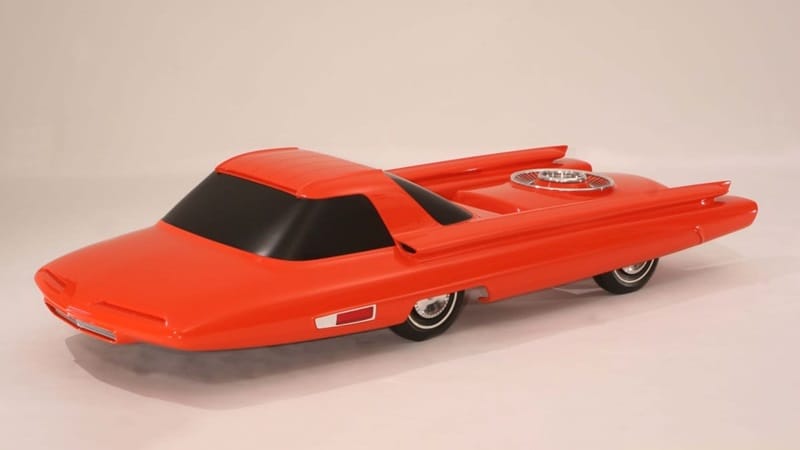
It may sound absurd. But car manufacturers have repeatedly tried to build electric cars with a mini nuclear reactor. We present you three ideas for nuclear cars.
Why should we have to deal with problems such as short range, electricity from fossil sources or problematic raw materials with electric cars when there is a simple solution to all of this: nuclear power! Not as an external power source, but directly in the vehicle.
Admittedly, the idea of powering electric cars with a built-in nuclear reactor may sound crazy. But several car manufacturers have seen this as feasible and have developed concepts for nuclear cars, even in this millennium. We present three of them.
Ford Nucleon: automobile from the 1950s
The year is 1958. Nuclear power is a relatively new discovery and is celebrated as an achievement, especially in the USA. Concepts for nuclear cars had been around for several decades at this point. The Detroit car manufacturer Ford is also playing with the idea of a nuclear car. The Ford Nucleon was born in 1958.
Although the Ford Nucleon never went beyond a concept vehicle, the vehicle was intended to be mCan travel up to 8,000 kilometers on just one charge. How practical that would have been with a length of five meters, a width of almost two meters and a height of just one meter – apart from the nuclear power reactor in the car – is another question.
The drive was to come from a “power capsule” in the rear, which in turn was to be charged via a converter transmission. The idea was to use uranium fission to generate water vapor, which in turn would power the car.
Ultimately, the concept never became a marketable car. The heavy layers of lead to protect against radioactive radiation and the complex cooling system that the Nucleon required ultimately made production impractical.
Arbel-Symétric of 1958 was almost built
At the same time as the Ford Nucleon, the world also saw the Arbel-Symétric at the 1958 Geneva Motor Show.
The French company Compagnie Normande d'Etudes pour l'Application de Procédés Mécanique had already developed several Arbel models since 1951. The version presented at the motor show was supposed to be powered by a 40 kW generator powered by radioactive cartridges.
Apparently the vehicle was ready for production. However, the French government was not keen on the idea and simply banned the use of radioactive fuel. The Compagnie Normande then went bankrupt and Arbel also died.
Cadillac introduced the World Thorium Fuel concept car in 2009
The “World Thorium Fuel” concept car shows that nuclear cars are not a thing of the past. Cadillac presented the idea at the Chicago Auto Show in 2009 (but without the radioactive drive).
As the name suggests, The nuclear power for cars should not be generated from uranium, but from thorium.
The technology was developed at the time by scientist Charles Stevens. Stevens wanted to create a prototype thorium laser to power the vehicle.
Thorium has some advantages over uranium: It is only “weakly” radioactive and is the most common radioactive element in the earth's crust. Some micro-nuclear power plants run on thorium, although they are still too large to fit in a car.
Steven's laser approach was intended to solve this problem. But nothing ever seems to have come of it. And that may also be the reason why the Cadillac World Thorium Fuel remained just a model.
Nuclear cars? What could possibly go wrong…
While the idea of nuclear cars has inspired automakers, scientists and engineers for over a century, there are several reasons why we don't see such vehicles on the road to this day.
On the one hand, there are the safety concerns surrounding possible radiation. It has not yet been possible to build a nuclear car in such a way that it does not cause any damage even in the event of an accident or explosion. Nobody has ever managed to build a nuclear power reactor so small that it fits in a car.
There are creative solutions, such as Charles Stevens' thorium laser or the radioactive battery that the start-up NDB presented in 2021. But putting these ideas into practice doesn't seem to be that easy, which is certainly due to the fact that many people have concerns about “moving nuclear power plants”.
So it may be a while before we have functioning nuclear cars… and that may be a good thing.
Also interesting:
Source: https://www.basicthinking.de/blog/2024/11/08/atomautos-ideen-elektroautos/


